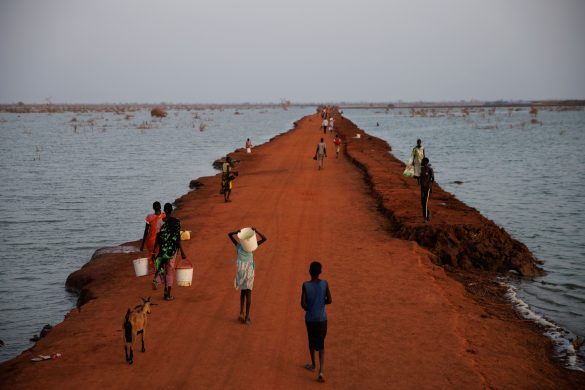Det er læren fra adskillige fattige asiatiske lande, hvor myndighederne er dårligt forberedte – eller slet intet gør – overfor katastrofer, der langsomt bygger sig op og dét næsten uanset hvor mange advarsler de får ind – men heller ikke bistandsdonorerne går ram forbi.
DHAKA, 7 December 2012 (IRIN): In southwestern Bangladesh, recent large-scale water-logging – stagnant flood water that fails to recede (trække sig tilbage) – threatens agriculture and public health for years to come.
It is a crisis in the making, highlighting the risks slow-onset natural disasters pose to poor countries, and how ill-prepared officials are to respond – even with ample (rigelig) early warning.
“At first glance, one would expect that, the slower the onset of a disaster, the better prepared we should be to mitigate its impacts,” UN Special Representative of the Secretary-General for Disaster Risk Reduction Margareta Wahlström told IRIN.
“What we often find, instead, is that we are far too late to react,” added he.
Last year, residents in Thailand had months of flood warnings, beginning in July 2011, as flooding upcountry triggered by a tropical storm slowly wound its way south. Flooding persisted in some areas until mid-January 2012.
But even with ample warning, the disaster killed at least 628 people, affected more than 13 million people and damaged 20.000 sqkm (km2) of farmland.
Warnings not heeded (advarsler overhørt)
Khurshid Alam, former head of livelihoods and disaster reduction at ActionAid’s office in Bangladesh, said slow-onset disasters receive less media attention and are less dramatic than flash floods or cyclones.
“The persistent water-logging of the Satkhira region in the country’s southwest is currently the most significant slow-onset disaster plaguing the country,” noted he.
Unlike a flash flood, whose effects can be fatal immediately, it can take years of warnings before slow-onset disasters – such as droughts, riverine erosion, coral bleaching (afblegning) and increasing soil and water salination (saltholdighed) – turn deadly.
The problem is that warnings are not always heeded, said Wahlström.
“Given the collective experience of responding to drought emergencies over the last 50 years, it is surprising that, once again last year, the world was caught short in its response to a drought-fuelled famine in the Horn of Africa and in the western Sahel, which was predicted well in advance”, he stated concluding:
“The lives and livelihoods of millions were at stake, but the warnings were not acted on.”
Governments, donors and aid groups, conditioned to responding to rapid-onset disasters, need to become more flexible in responding to early warnings, advised Wahlström.
This is especially true in Asia, one of the most natural-disaster prone areas in the world, with more fatalities attributed to natural hazards (farer fra naturkræfterne between 1975 and 2011 than anywhere else in the world.
Urban risk
Læs videre på
http://www.irinnews.org/Report/96989/DISASTERS-Slow-onset-disasters-take-toll














